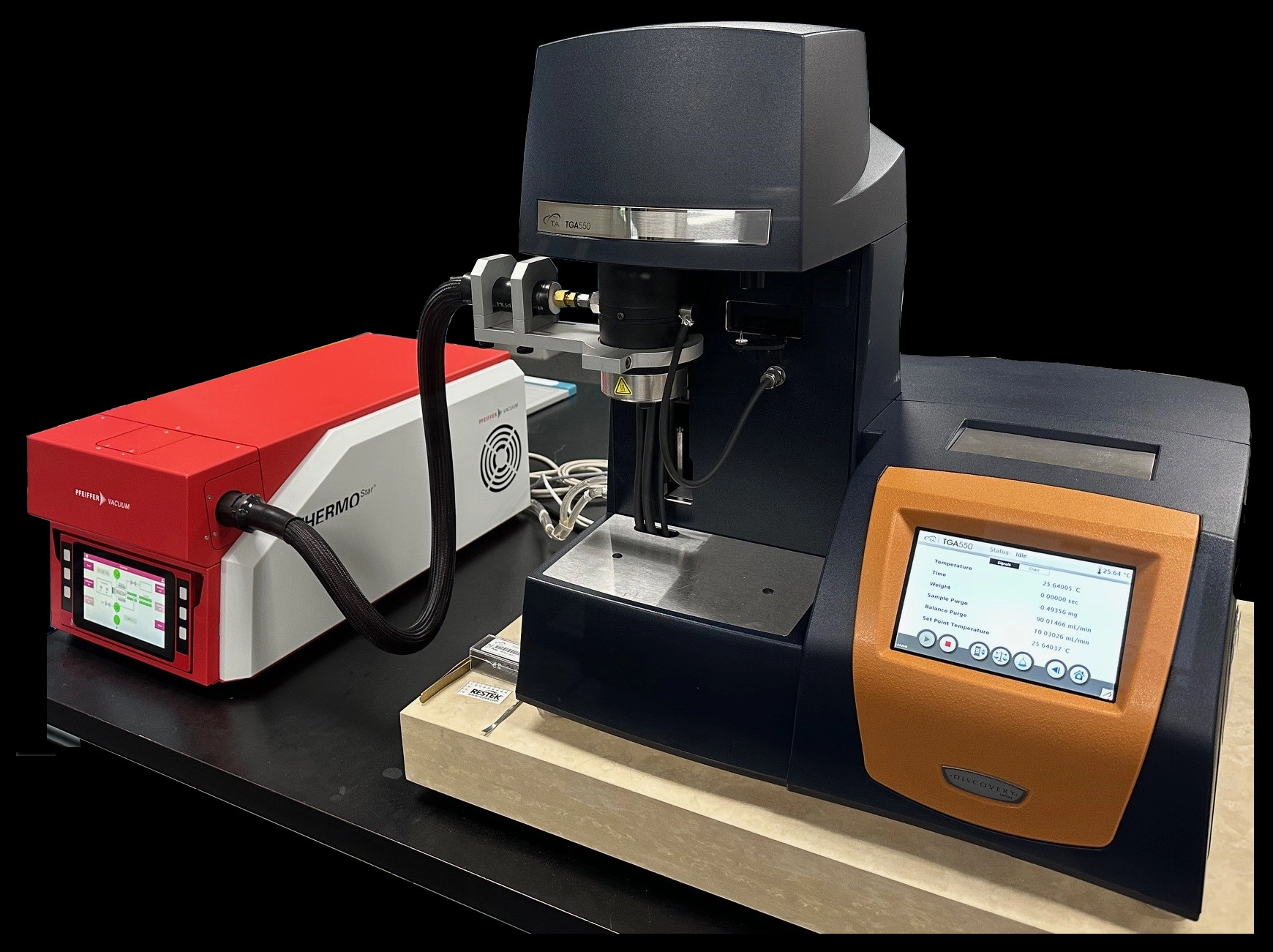Thermal Gravimetric Analysis-Mass Spectrometry (TGA-MS)
What is a Thermogravimetry Mass Spectrometric (TGA-MS) Analysis?
Thermogravimetry mass spectrometric analysis refers to combination of standard thermogravimetry with a capability of mass spectrometric analysis.
Standard thermogravimetry (TGA) is a technique in which changes in sample weight (absolute or as a percentage) are measured as a function temperature. TGA can investigate multiple material properties like thermal stability, decomposition behavior, phase transitions and effects of oxidative and corrosive environments. By comparing mass loss during heating, an abundance of information can be derived to reconcile chemical or physical reactions during heating.
When mass spectrometric analysis in conjunction to thermogravimetry is used, the combined capability can identify the gases evaporating during the thermogravimetry analysis and provide further insight into chemical processes associated with weight change of solids.
What types of samples can typically be analyzed using TGA-MS?
TGA-MS is commonly used to analyze solids like polymers, pharmaceuticals, carbon-based materials, inorganic compounds, food products, and environmental samples, providing insights into their thermal stability, decomposition behavior, and gas evolution during heating. Typically, a gram of sample is sufficient for the analysis.
What are the typical applications for TGA-MS?
TGA-MS is widely used in various fields for material characterization and thermal analysis. Some typical applications include:
- Polymer and Plastic Analysis:
Identifying decomposition products, studying thermal stability, and detecting additives or contaminants.
- Aerospace and Automotive:
Evaluating thermal stability of coatings, adhesives, and composite materials used in high-temperature environments.
- Pharmaceuticals:
Investigating drug formulations, moisture content, and thermal degradation pathways.
- Environmental Studies:
Analyzing pollutants, volatile organic compounds (VOCs), and decomposition of waste materials.
- Food and Agriculture:
Examining food packaging materials, detecting contaminants, and studying moisture loss in agricultural products.
- Forensic Science:
Identifying unknown substances and analyzing degradation products in forensic investigations.
Request a Demo or Follow-Up Call
Thermogravimetric Analysis-Mass Spectrometry (TGA-MS) results for a calcium oxide sample, highlighting weight loss as a function of temperature (°C). The weight percentage (right y-axis) shows distinct thermal decomposition stages, indicating phase transitions in the sample. Simultaneously, the ion current variations (left y-axis) reflect the gas evolution events associated with sample weight loss, providing insights into the underlying decomposition mechanisms. Notable transitions include water release (~200°C, 18.02 AMU), carbon species evolution (~600°C, 12.01 AMU), and CO₂ emission (~800°C, 44.02 AMU), demonstrating the material’s thermal behavior and phase changes under controlled conditions.
Major technical specifications of TGA-MS:
| Temperature range | Ambient to 1000°C |
| Sample weight | Up to 1g, with 0.1 ug resolution |
| Heating rate range | 0.1°-100°C/minute |
| Ballistic heating rates | >600°C |
| Ambient atmosphere capabilities | Nitrogen, Oxygen, etc. |
| Mass range (amu) | 1-300 |
| Mass resolution | >0.5 amu |
| Sensitivity | <100 ppb (gas dependent) |
| Transfer line temperature | 200°C (fixed) |





